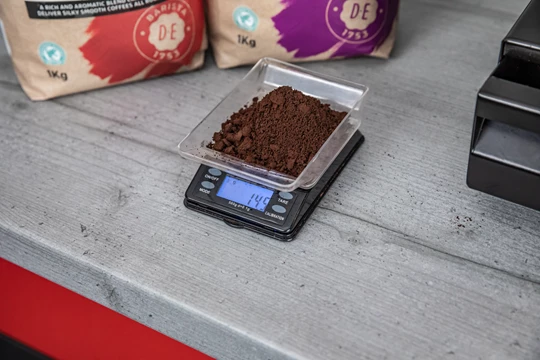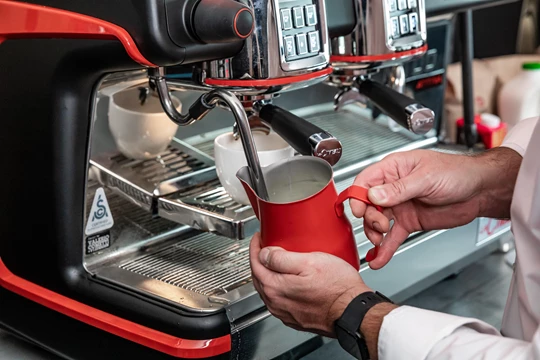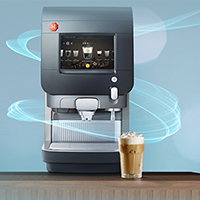Barista quality coffee: a step-by-step guide
Ever wanted to know how the pros make the perfect cup of coffee? Follow this step-by-step guide on producing barista quality coffee, but first, here is a list of everything you’ll need:
- Milk Pitcher
- Dosing/Measuring Cup
- Shaker
- 3x cleaning towel (1 steam, 1 machine, 1 portafilter)
- Tamper
- Scale
- Cleaning brush
- Shots timer
- Disposal container for coffee grounds
- On demand grinder
- Espresso machine

Grind
Adjust the grinder so that when brewing around 35ml of water, will pass through 14-15 grams of ground coffee in 22-28 seconds. This is the perfect volume and amount of time to develop the aromas and the full flavour to make barista quality coffee. You can switch between coarse and fine settings by altering the distance between the grinders blades, the tamp pressure must be consistent to do this!

Dose
Remove a portafilter and clean it with a cloth, it needs to be hot, clean & dry (use a separate cloth to do this). Dose according to the volume of your filter basket, a single shot should be 7-8 grams of freshly ground coffee or 14-15 grams for a double shot. Use the correct basket in the portafilter and level off the surface of the coffee.

Tamp
Use the tamper to ensure an even flow of water through the coffee and to maintain consistent pressure. The correct tamping pressure for a good espresso requires a weight of 12-15kg. Remove any excess coffee around the filter holder and lock it securely into the machine.

Brew
First, flush the grouphead and attach the portafilter to the grouphead.
Water pressure should be: 8,0 – 9,5 bars
Position the cups under the spout and press the correct button (single or double)
Extract for between 22-28 seconds for a 35ml Espresso.
Examine the espresso, the crema should be 3-4mm and a thick, golden, hazelnut colour. Look for flecks of light and dark which some barista’s call “the tiger skin”. If there is no crema, it’s not an espresso!
Top tip:
After extracting your espresso, always examine your spent coffee cake. If the cake is firm and compacted and comes out cleanly then the dose and tamping was correct!
If it comes out sloppy and wet, this may be an indication you have not dosed enough coffee, tamped too softly or the grind is too coarse.
If the cake is too hard and leaves an oily residue in the basket or has white sections on the surface the dose was too high, tamping was applied too firmly or the grind is too fine.

Milk
Using fresh, high quality milk is important to make barista quality coffee. Make sure it’s always chilled to around 4-7 oC. Either dairy milk or plant-based milk can be used, full fat milk offers a rich creaminess, but your customers may be too full for a second cup! Semi skimmed milk is the most popular. Aim for a temperature of between 65-70 oC, anything hotter than this and you risk burning the milk! Never re-boil or reheat the milk.
How to Froth the milk:
- Take a pitcher and fill it with milk
- Open the steam wand on the espresso machine to release water, use a cloth.
- Dip the tip of the steam wand in the milk and open the steam wand, whilst you hear a soft sound the milk will start to swell. It will begin to froth and rise level (this is the stretch phase)
- When you’ve created enough froth, move your pitcher a little up so the steam wand is under the milk surface continually steaming. This is your heating phase but remember the milk temperature shouldn’t be above 70°C
- Different milks have different heat settings – soy milk, for example, should not be heated as hot as cow’s milk!
- Purge & clean the steam wand before pouring the milk, tap out the bubbles and spin the milk!

Pour
Finally, you are ready to create your drink of choice.
To pour more textured froth onto your espresso base, pour from the side of the jug. Ideal for creating a cappuccino.
OR
To pour more steamed milk, pour from the jug spout, ideal for creating a latte or flat whites.
If you have velvety textured milk, you can begin to create some art on your drink.









